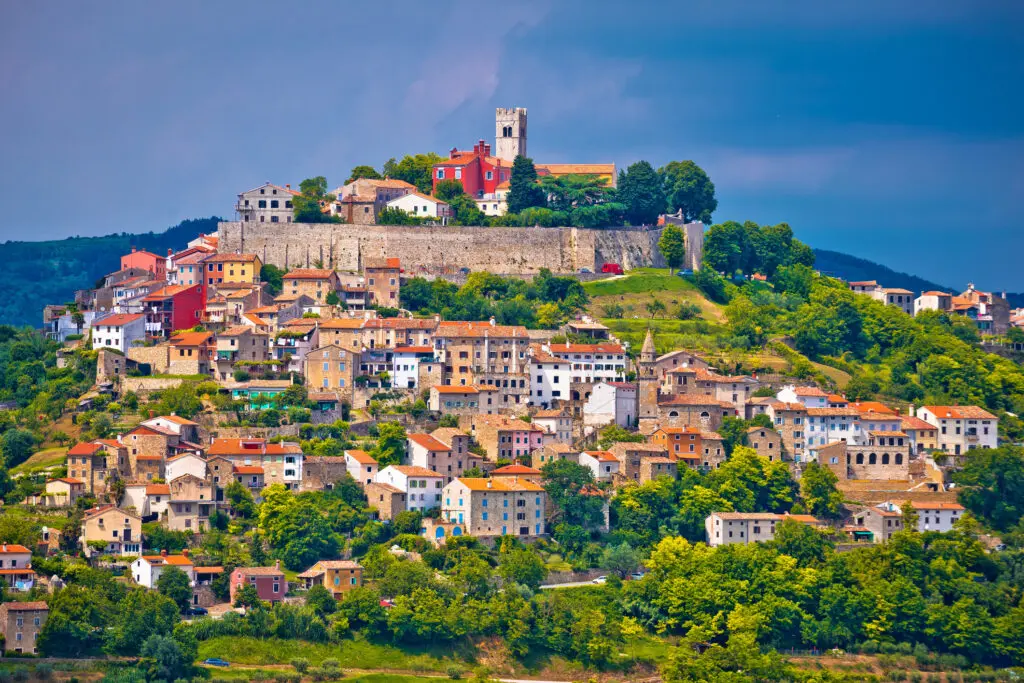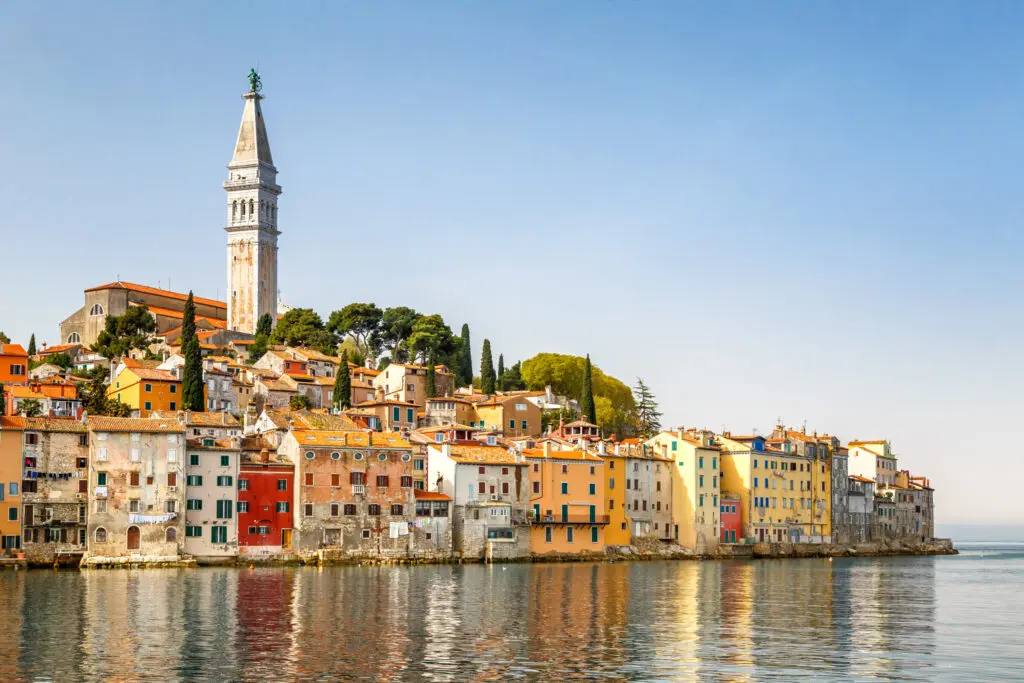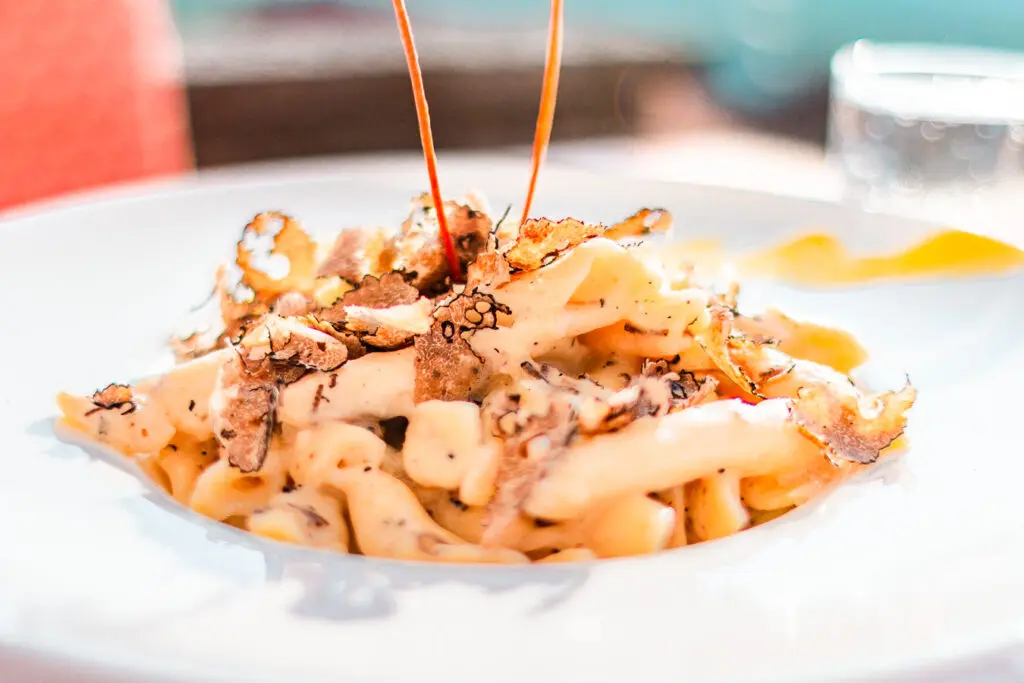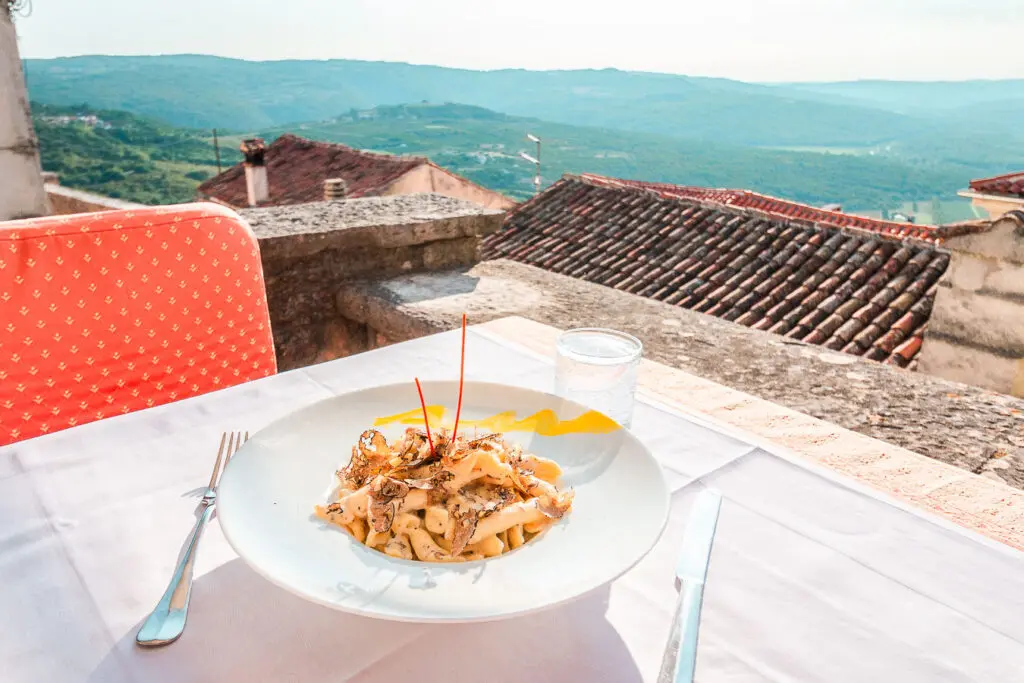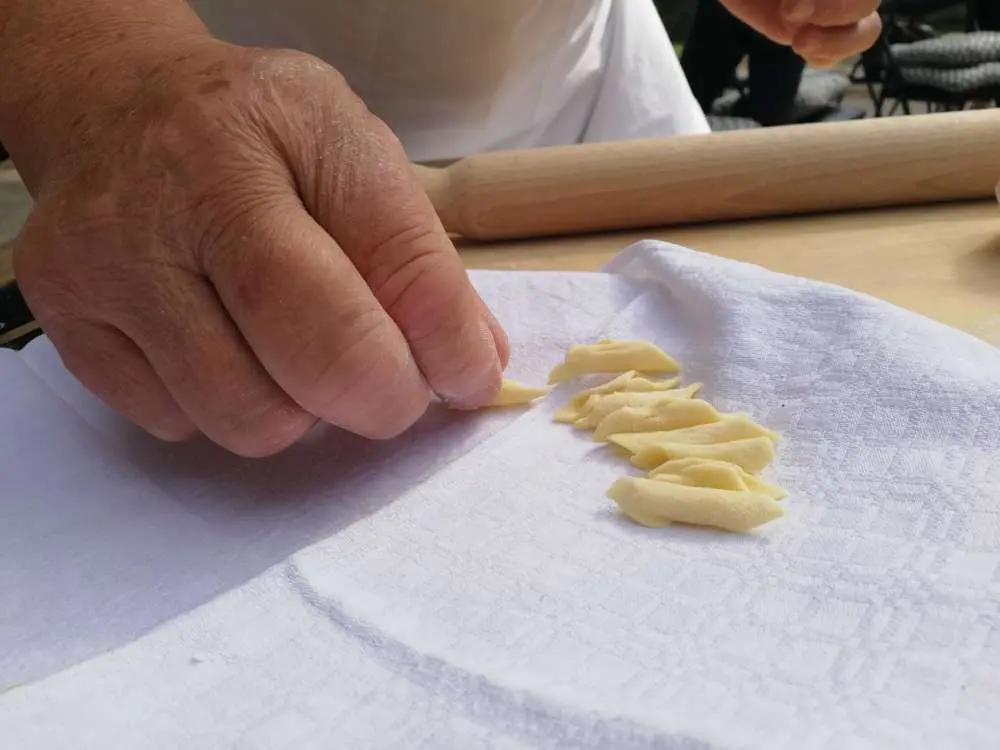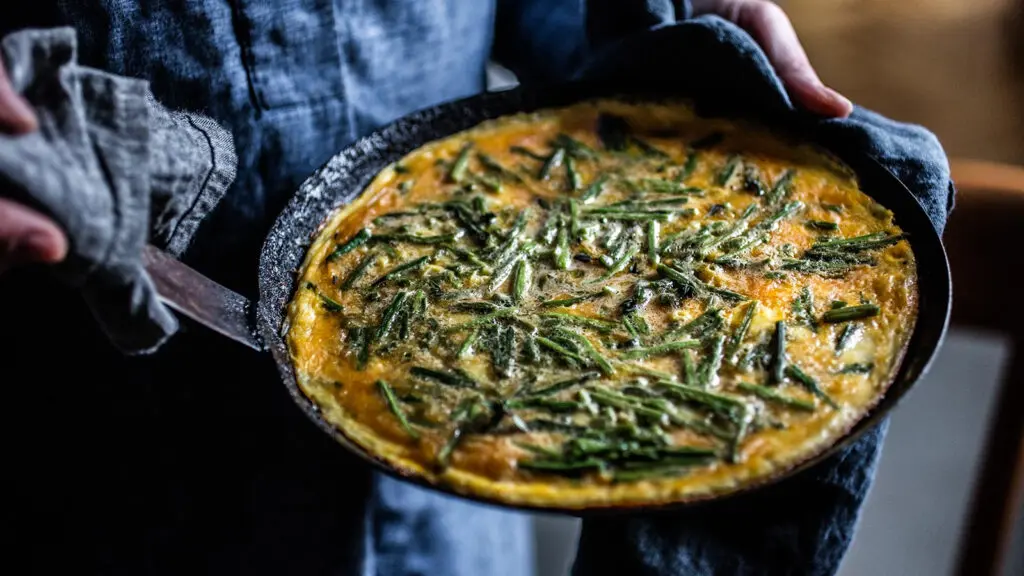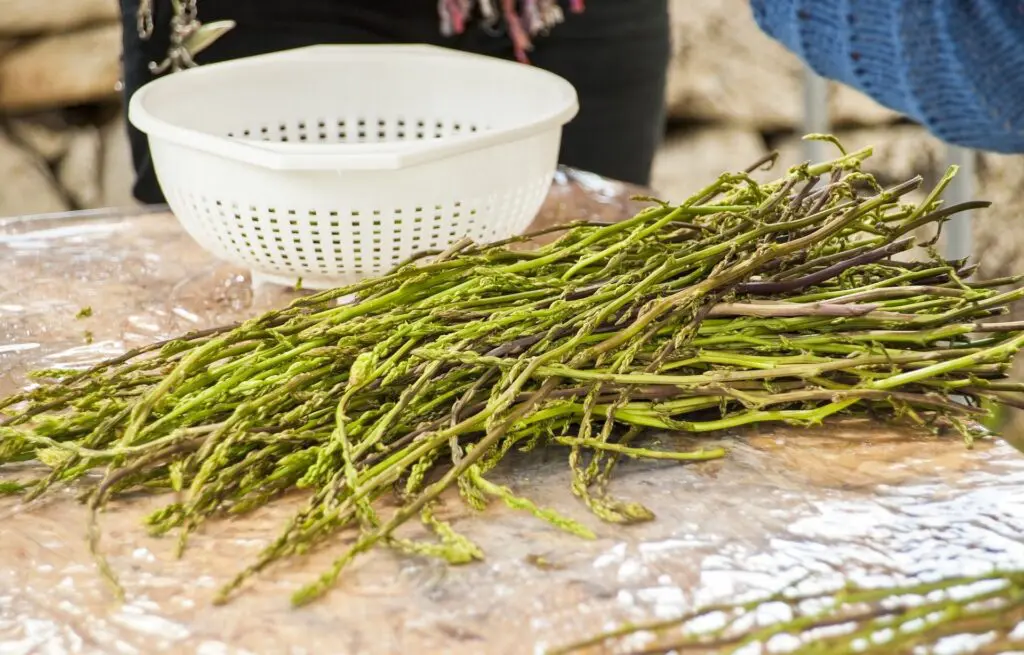The lush region of Istria is most famous for extra virgin olive oil, truffles, and wine, but these are only a few ingredients among the bounty this foodie paradise has to offer. The geographical position of Istria plays an important role in its gastronomy and various historical events have left a major impact. This resulted in perfect flavors and world-class food that can be found at any time of the year. Here’s an overview of not-so-famous yet excellent traditional foods of Istria.

Town of Motovun on picturesque hill, Istria, Croatia 
Rovinj on the Adriatic coast of Croatia
Jump to a section of this article
Boškarin – Better Than Beef
A symbol of the Istrian peninsula, the boškarin, is an ox weighing more than a 2018 Honda Civic. Additionally, it flaunts Maleficent-esque horns giving them an extra 5-feet vertically! With its gentle and peaceful nature, the boškarin is a sight to behold.
Distant relatives of the boškarin have been uncovered in northern Croatia dating as far back as the ice age. Today’s Istrian version originated from the podolica breed, which spread from the Danube to the Roman Empire via the Roman legion. For years, boškarins were the main workforce of every household. They were mainly used to pull heavy plows through the fields and to lug the stones used to build traditional Istrian family houses.
A major overhaul of the Croatian economic machine in the middle of the 20th century led to the abandonment of the Istrian cattle. The industrialization of agricultural production, the arrival of mechanization, social movements in the countryside, and commercial orientation in tourism resulted in utter decimation. From a herd of around 60,000 in the ’60s, by the early ’90s, there were just over 100. Thanks to regional initiatives, the skills of the local community, and their desire to protect local production, boškarins have become a protected species. Today there are about 2,500 oxen. Some of them can be seen today on family farms in different locations in central Istria.
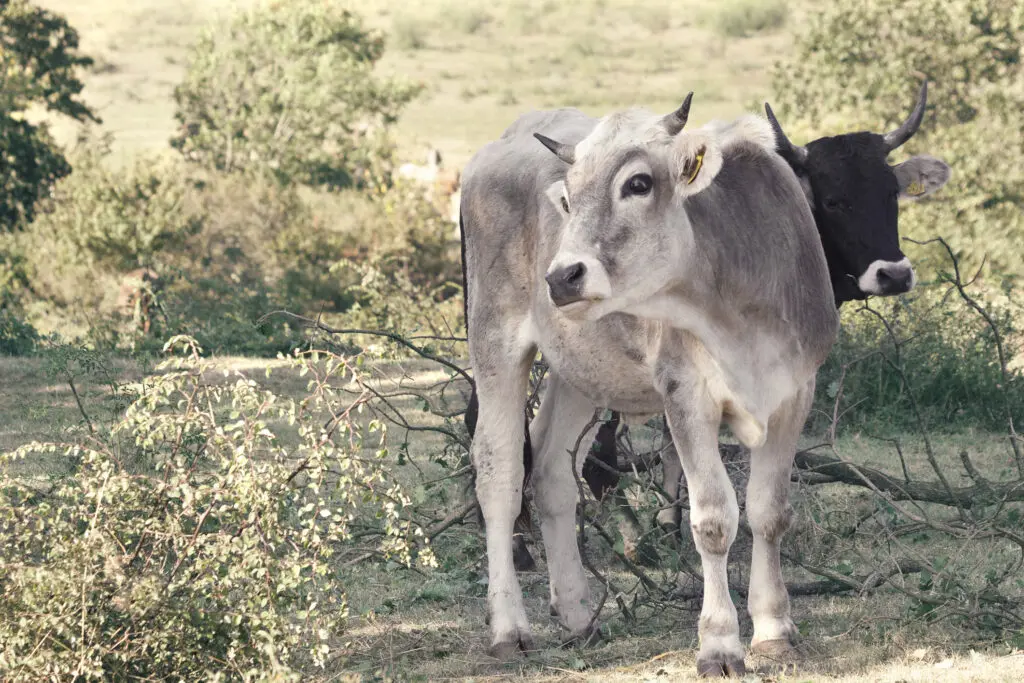
Boškarins are recognizable not only for its strength and size but also as a first-class delicacy, enjoyed by Croatians and visitors alike. Due to their natural grazing conditions and the quality of the fresh Istrian air, boškarin meat is particularly fibrous. Therefore, it’s a bit more challenging to prepare. For decades, boškarin was prepared mainly as a slow-cooked stew. Thanks to continuously improving cooking techniques and new recipes, today we enjoy a variety of traditional meals with a twist. Some of the most popular dishes are: a soup made of boškarin’s tail, a variety of sauces, ox tagliata with vegetables (think Croatian wagyu), and ox fillet. For those of you whose mouths are currently watering, worry not. All of these dishes can be devoured in Istrian restaurants or in Zagreb – the capital of Croatia.
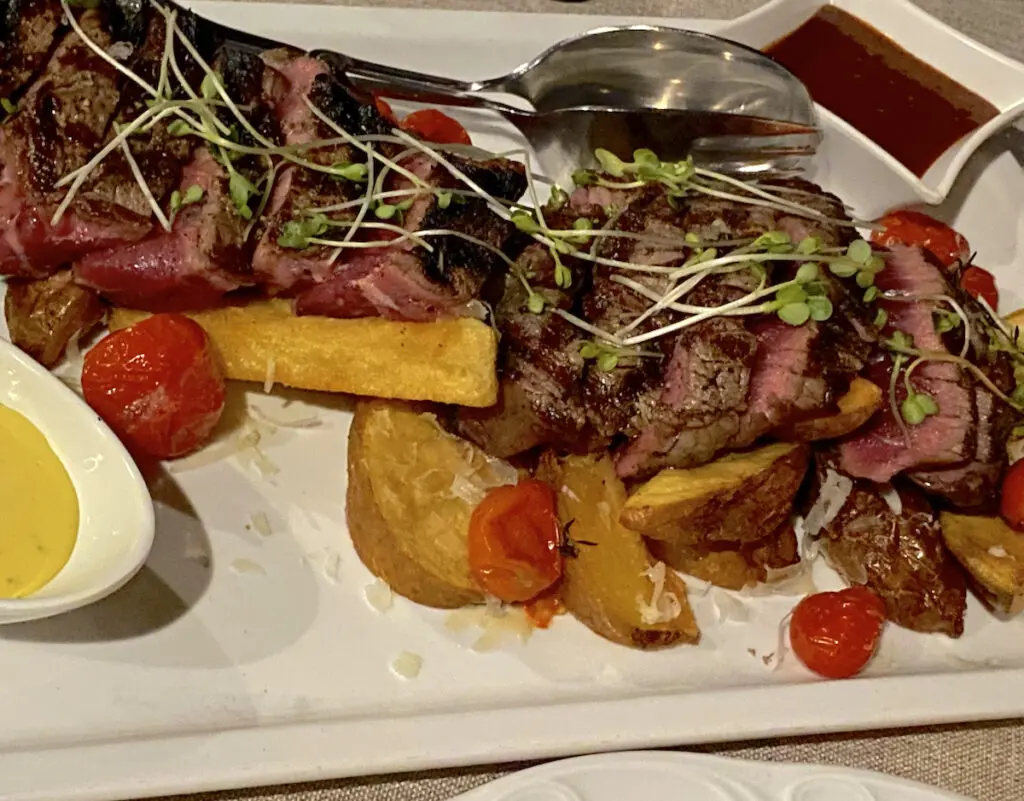
It would be a shame to miss out on homemade ox sausages or gourmet salamis enriched with Istrian truffle flavors. These delicacies are relatively new to Croatia but have become a widely embraced tradition. In addition, locals will insist that Istrian homemade ox sausages must be paired with a high-quality red wine. Anyone who places their trust in this local wisdom is guaranteed to have a one of a kind experience.
Fuži and Pljukanci – Istrian Pasta Varieties
Traditional Istrian pasta, fuži and pljukanci, were once considered poor man’s food. Nowadays, they are major favorites among both local and visiting gourmands. Still far from being exclusively reserved for the wealthy, however, with the right sauce, both become proper delicacies.
To make fuži, you need some wheat flour, a few eggs, a little bit of water, and a pinch of salt. The dough needs to be kneaded, rolled into a thin layer, and sliced into rhomboids. It takes some skill to wrap the little rhomboids on a stick and connect the ends. You boil them for 5-6 minutes in salted water. Pljukanici are even simpler than fuži. All you need is some flour, water, and salt. You take a small piece of dough, only half an inch in size, and rub it between your palms until it gets longer, spindle-shaped. They have to be cooked a bit longer than fuži, until they float to the surface.
Both fuži and pljukanci are served with sauces, the so-called šug, usually made from seafood or meat. Locals eat them with beef or boškarin goulash, lamb goulash, or traditional Istrian dish žgvacet. However, what makes these simple pastas rise to luxury levels is a truffle sauce. Truffles grow in north-western Istria, in the valley of the River Mirna and the forest surrounding the picturesque hill-top town of Motovun. They are hard to find, expensive to buy, but quite easy to prepare. They turn even the most humble dishes into something spectacular!
Pasta lovers may want to schedule their visit for July. Every year, the residents of another hill-top town, Žminj, organize the Istrian Pasta Festival. This gastronomic event seeks to preserve local pasta-making traditions and support local pasta producers. It is held at a gorgeous location behind the old Church of St. Michael, in the shade of centuries-old chestnut trees. During the festival, you can taste and buy pasta, sauces, cheeses, truffles, and many other products connected to pasta. You can also participate in workshops or presentations of new and traditional dough recipes. In the evenings, the town hosts ethnomusic concerts, which round off the days nicely.
Žgvacet – Don’t Call it Chicken Goulash!
This authentic Istrian chicken dish is hard to pronounce, but don’t hesitate to finger-point if you see it on the menu. The look might remind you of goulash, but locals will proudly point out all the differences in ingredients and preparation. Once you try it, you’ll see it really is something else. To begin with, žgvacet is made exclusively from chicken. You might come across variations with veal, beef, or lamb, which true Istrians would scorn. Žgvacet used to be, and there seems to be a pattern when it comes to Istrian dishes, a poor folk dish. In the past, life in Istria was hard, people lived in poverty and struggled with hunger. Beef was almost never on the menu since even those few who had cattle used it for work on fields. Chickens, on the other hand, were easy to grow so many families had them.
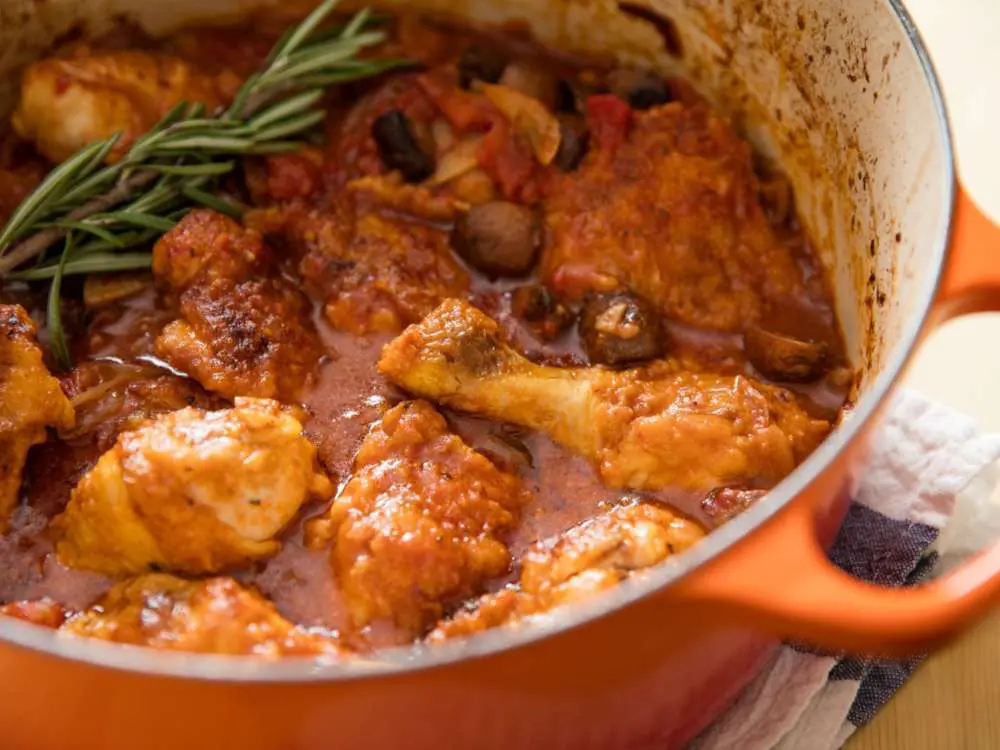
To make žgvacet, it’s best to use chicken legs and thighs. A whole chicken works too, as long as it’s chopped into smaller pieces. Another thing that distinguishes žgvacet from goulash is that you fry the meat first and add chopped onions second. The rest of the ingredients are garlic, tomatoes, white wine (preferably Istrian Malvasia), salt and pepper, and herbs: rosemary, thyme, basil, shallot, and marjoram. It’s the combination of herbs and different qualities of wine that set apart one žgvacet from another.
Žgvacet is usually served with fuži, pljukanci, or polenta, and you can find it in traditional Istrian taverns around the peninsula.
Istarski Brodet – Istria’s Take on the Classic Fish Stew
Due to its closeness to Italy and many years spent under either Venetian or Italian rule, it’s no wonder brodet, originally an Italian fish stew (brodetto), became very popular on the peninsula. Besides in Istria, brodet is also made along the rest of the Croatian coast, although there are some differences in preparation.
In general, brodet is made from several kinds of fish, mostly bottom-dwelling, such as conger eel, grouper, monkfish, etc. However, other types of fish will work, as well as squid or cuttlefish. This nutritious dish is quite easy to make, with cleaning the fish being the most difficult part. You cut the fish into large enough pieces, so they don’t fall apart while cooking. You saute onion and garlic in extra virgin olive oil, add tomatoes and cook for ten minutes before adding fish, salt and pepper, bay leaf and parsley, white wine, and some water. What makes this brodet Istrian is the wine – Istrian Malvasia, which gives it a distinct flavor. Locals will tell you you should never stir brodet, just gently shake the pot, and cook for half an hour without a lid.
The dish works best with polenta or bread because both soak up the broth nicely. Look for Istrian brodet in restaurants in coastal towns of Istria, such as Rovinj, Poreč, or Pula.
Istarska Maneštra – A Rich (Sometimes Vegetarian) Stew
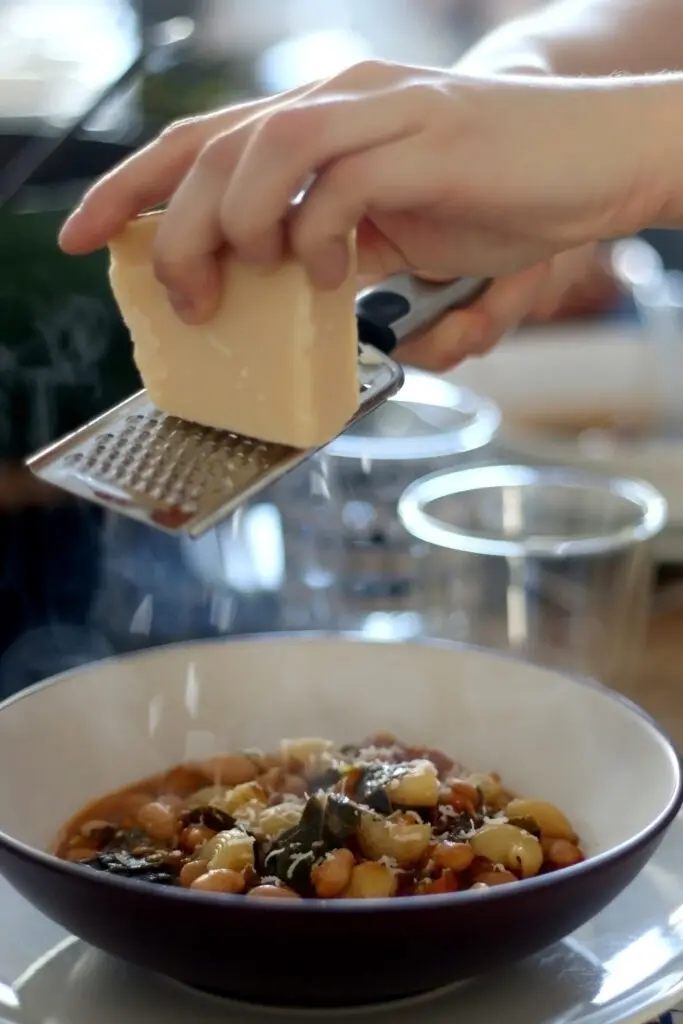
Istarska maneštra is a hearty Istrian dish cooked throughout the year with various combinations of meat and vegetables. This dish is another great example of how, even in times of poverty, imagination and creativity can result in a delicious, wholesome meal. Even without meat, this colorful, vegetable-loaded mixture is nutritious enough to get you through the day.
This super-healthy dish is usually made with bacon and bulked up with corn, beans, potatoes, garlic, tomatoes, beets, and sauerkraut. Nowadays, locals add a prosciutto bone for better flavor. To prepare maneštra the right way, all the ingredients need to be cooked on low heat. First, you cook bacon and/or prosciutto bone and beans until boiling. You lower the heat, continue cooking for half an hour, and add corn. After another half an hour you add the rest of the ingredients and cook for thirty minutes more.
The dish works as a standalone meal and it’s traditionally served with a piece of bread and sprinkled with some parmesan cheese. You can find it in many Istrian restaurants and taverns.
Škampi na Buzaru – Stewed Scampi
Škampi na buzaru is an Istrian stew centered around fresh Adriatic shrimp, with humble ingredients layered to create a messy but memorable meal. The name buzara comes from old Venetian but the exact meaning is disputed. The two front-running theories are that the name comes from the clay pot used on Venetian galleys or that it roughly translates as “trick” because Venetian fishermen would mask the fact that they used crayfish scraps by adding tomatoes and wine to create a delicacy.
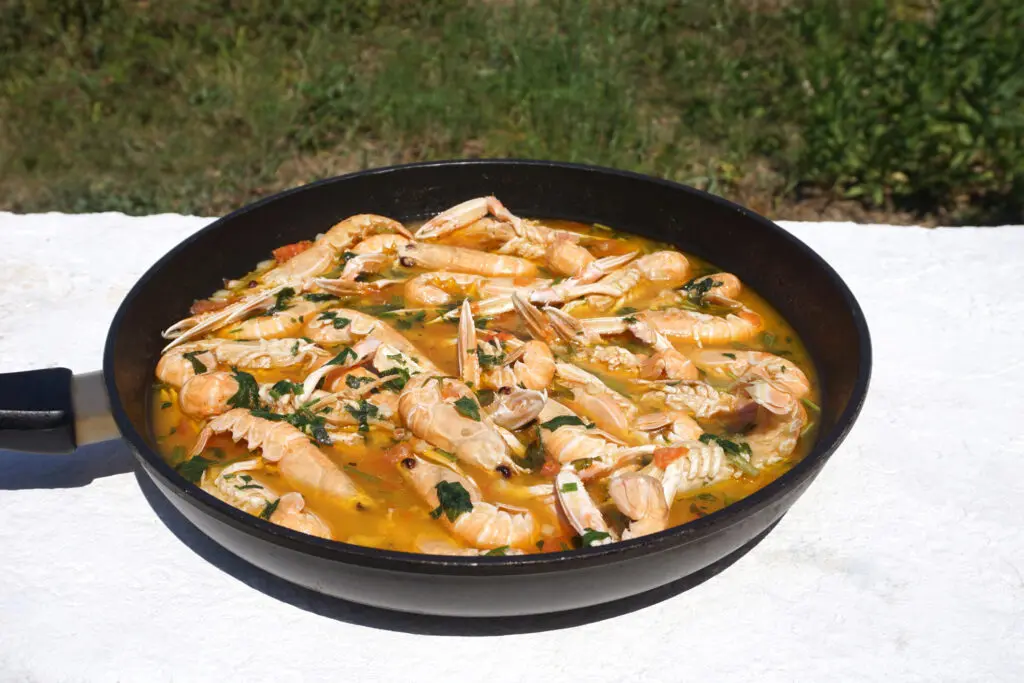
The varieties of škampi na buzaru are endless but most follow a basic template with minor differences. In general, preparing buzara means cooking crustaceans or shellfish with wine, garlic, onion, olive oil, different types of fresh herbs, and breadcrumbs. Although very simple to prepare, this meal is very rich in flavor and many people would agree that shrimp cooked in this manner is even tastier than their more expensive and prized cousin, the lobster. The first step in the preparation is to slowly heat the olive oil and fry the shrimp for a few minutes. Make sure to turn them over, so they are fried from all sides. Next, add chopped garlic and some parsley. When the aroma of slightly golden garlic hits your nostrils, you should add the rest of the ingredients: wine, chopped tomatoes, prosecco, salt and pepper. Before cooking, make sure your pot is wide enough so that all the ingredients are nicely placed on the bottom. Cook it half covered over a low heat for about ten minutes after adding wine and prosecco to allow the alcohol to evaporate. Check the consistency of the stew, add breadcrumbs if necessary, and cook, uncovered, for a few more minutes.
Škampi na buzaru are enjoyed alongside some polenta, pasta or fresh-baked bread (the crunchier the better!) which must be dipped in the šug (sauce), considered by some to be the best part of this meal. Knives and forks on the other hand are merely a hindrance. If you want to feel like a local you should eat this dish with your fingers. Your wine glasses won’t be crystal clear but who really cares?!
Fritaja s Divljim Šparogama – Omelet with Wild Asparagus
How do you like your eggs? A simple question with many answers: over-easy, hard-boiled, soft-boiled, sunny-side up, poached, scrambled? It is said that the folds in a chef’s hat represent all the manners in which they can cook an egg. Istrian chefs have a special fold in their hat, the fritaja s divljim šparogama, or simply an omelet with wild asparagus. Although people may think there is nothing special or particularly unique about this dish, simplicity and fresh ingredients are always the key to a delicious dish. Fritaja is a specialty of Istria but also Slovenia (Soča Valley). The name comes from Venetian word fritaia meaning fried. Keeping chickens at home is quite common in Croatian villages so an abundance of eggs means this was and remains a very affordable meal. Of course, homegrown, free-range eggs are the best as they always have the most delicious taste and give that rich yellow-orange color to the dish. But you can’t just rely on fresh eggs or the fritaja s divljim šparogama would have to shorten its name!

Photo credit: Maja Danica Pecanic 
Different variations can be prepared throughout the year with mushrooms, sausages, and bacon but the wild asparagus variety is typical for springtime as they are fresh. At the same time, whether by coincidence or divine providence, this is also the season for spring onion so naturally it is also added. Besides that, there is nothing much else to add – a bit of salt and pepper, but feel free to add different herbs and spices. The eggs are whisked in a bowl, followed by the addition of onions and asparagus. The next step is to pour the mixture into the pan (with a generous dash of olive oil, of course). When the bottom of the omelet begins to stick, it should be turned over and briefly fried at a higher temperature, so it stays soft and creamy. Also, for a richer fritaja, whites and yolks can be whisked separately. It is your choice to cook with two eggs or two thousand, depending on your guest list! Throughout Istria, fritaja s divljim šparogama is prepared usually for local celebrations and various events. One of the biggest ones contained five thousand eggs! But “regular” oversized Istrian omelets contain around two thousand eggs and twenty kilos of wild asparagus – imagine the size of the pan!
Where to try all these delicious dishes?
To try some traditional Istrian dishes and treats, we suggest heading to inland Istria with our Istria in a Day Small-Group Tour. This full-day tour takes you to the picturesque hilltop towns of Grožnjan and Motovun, an off-the-beaten-path organic winery for homemade lunch, and the coastal town of Poreč. Besides the flavorsome lunch, you will get to try many Istrian delicacies, including truffles!

Born and raised in Dubrovnik, Andrea’s involvement in tourism began as a child as her family rents apartments for tourists. Her inquisitive nature led her to study journalism in the Croatian capital, Zagreb, though her heart remained in her hometown and she returned there after her studies. One of Andrea’s biggest passions is singing and she has been a member of the Dubrovnik Folk Ensemble Lindjo for over 13 years.
